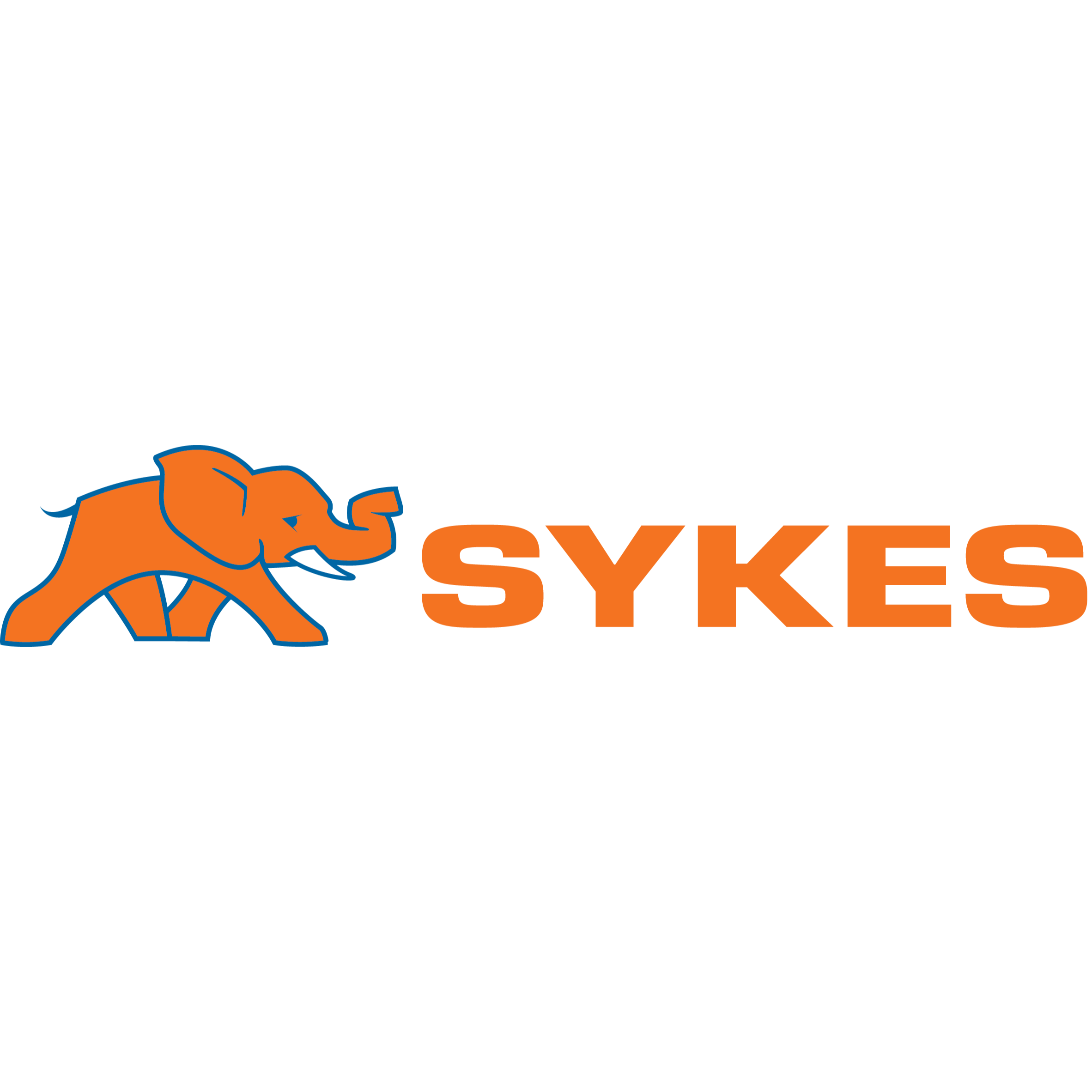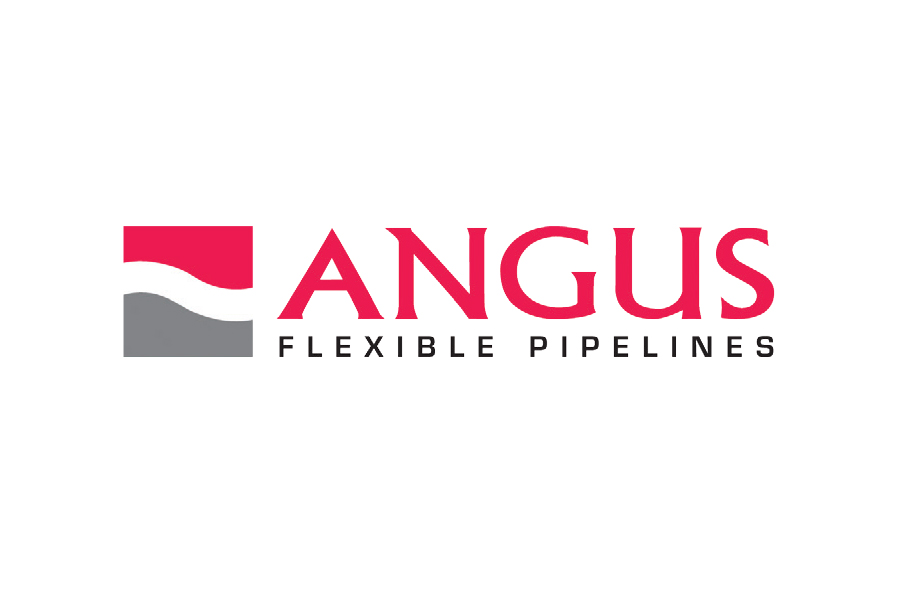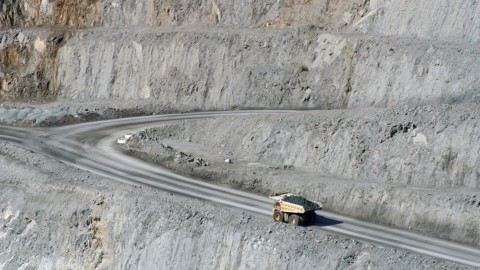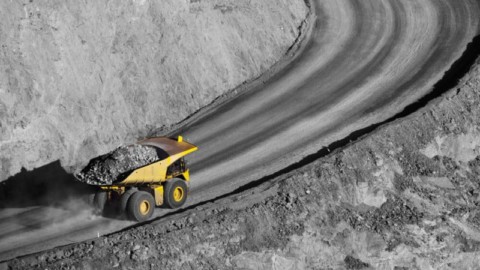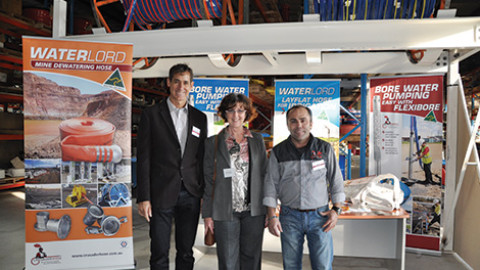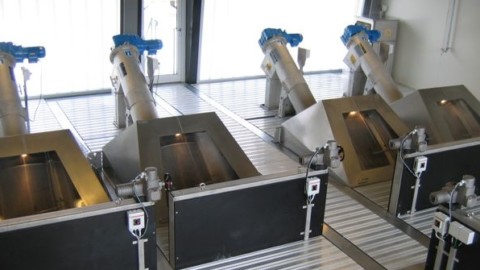A project to expand the Lihir Gold mine, located on volcanic Lihir Island in Papua New Guinea’s north-east, proved to be a challenge due to a high water table. To reduce the water level in the pit to allow for expansion, experts were brought in to design and provide a dewatering solution. Crusader Hose was one of the equipment manufacturers that was involved in the project, supplying flexible layflat hose.
The Lihir Gold mine is an open-pit mine located within one of the island’s large volcanic calderas, the Luise Caldera, which borders the sea. While the volcano is considered extinct, it is still geothermally active, evidenced by fumaroles – smoke emanating from the rocks within the pit.
Due to the pooling of rainfall and regular seepage of seawater through the crater rim into the pit, the pit needed to be pumped out in order for the mine expansion plans to go ahead.
Designing the dewatering system
The prime contractor for the project was a large pumping company from NSW, who are experts in designing mine dewatering systems.
The company was brought in to provide a solution to lower the water table, so that mining could be expanded.
The final design included a dewatering system that used 3 x 350kW submersible bore pumps inside an angled poly-pipe casing suspended from flexible hose.
Each pump was driven by a separate generator and connected to a platform, which cantilevered over the pit wall.
In order to construct the angled bore casing, 900mm diameter poly-pipe sections were welded together to form an insulation sleeve, which rested at an angle along the pit slope.
The length of poly-pipe into the pit was 175m long and the water level was about 45m below the headworks.
The bore casing was then securely anchored from the headworks, which incorporated a concrete-padded, steel-framed platform, which was surrounded with safety rails.
Once the bore casing had been secured, installation of the submersible pumps commenced.
Each 350kW stainless steel submersible pump was mounted on a skate which slid within the casing, allowing the pumps to be let down inside the poly-pipe, plus acting as a centraliser.
The pumps were connected to Flexibore, the flexible layflat hose supplied by Crusader Hose, which suspended each pump under its own weight, as it was lowered 175m into the pit.

The hose of choice for the system
Flexibore was chosen for the project as it allowed for easy installation of the pumps over a roller while clamped from a crane.
“As the hose is manufactured from woven fabric that acts like a lifting sling, a high tensile load of up to 16 tonnes can be suspended from it,” said Francois Steverlynck, Managing Director of Crusader Hose. “The hose is also supplied in one continuous length.”
“The 8” Flexibore also has a burst pressure of 440m, which was well within the design pressure for the project.”
A successful installation
With the submersible pumps safely lowered inside the poly-pipe casing, they were then connected to the diesel generators via the power cables attached to the Flexibore hose.
Settings and flow rates were controlled until each pump attained a flow rate of 168 litres per sec.
The CAT diesel generators were supplied by Taranis Power of WA. Gabriel Hoascar, the engineer from Taranis who connected the pump cables and fired up the generators, said, “I was impressed at how efficiently the system worked.
“Our company will look to supply more systems using Flexibore hose.”
This partner content is brought to you by Crusader Hose. For more information about Flexibore, visit crusaderhose.com.au.



